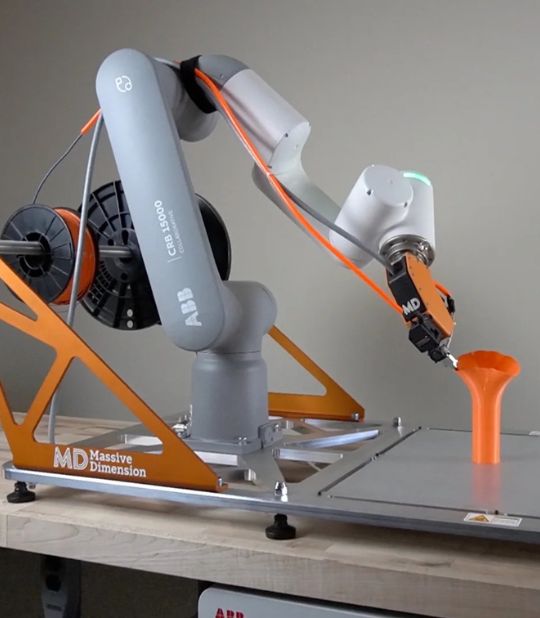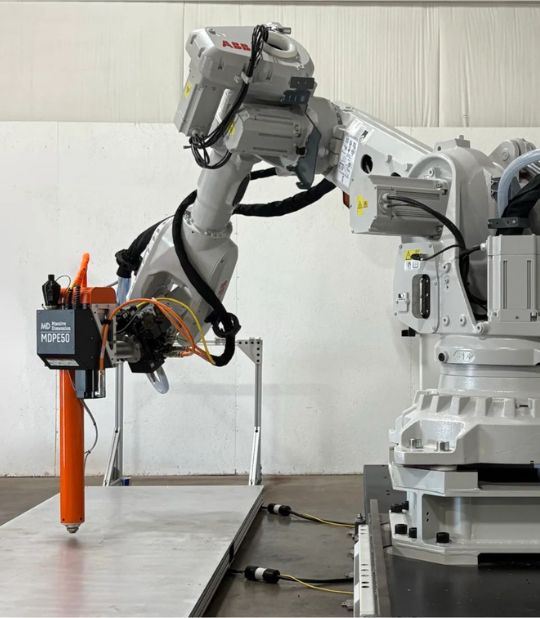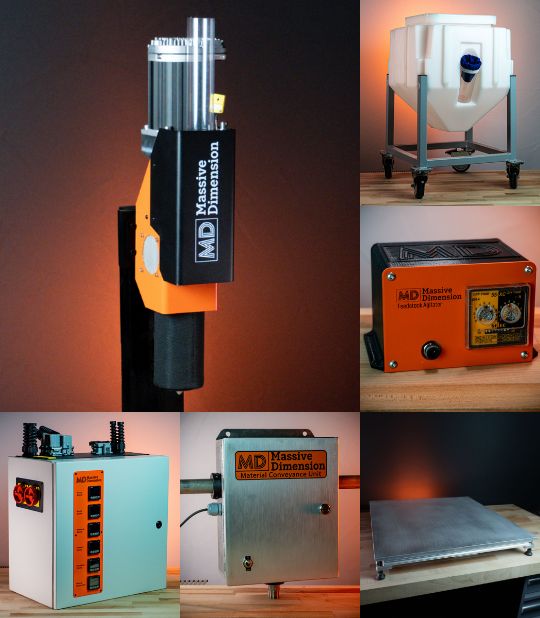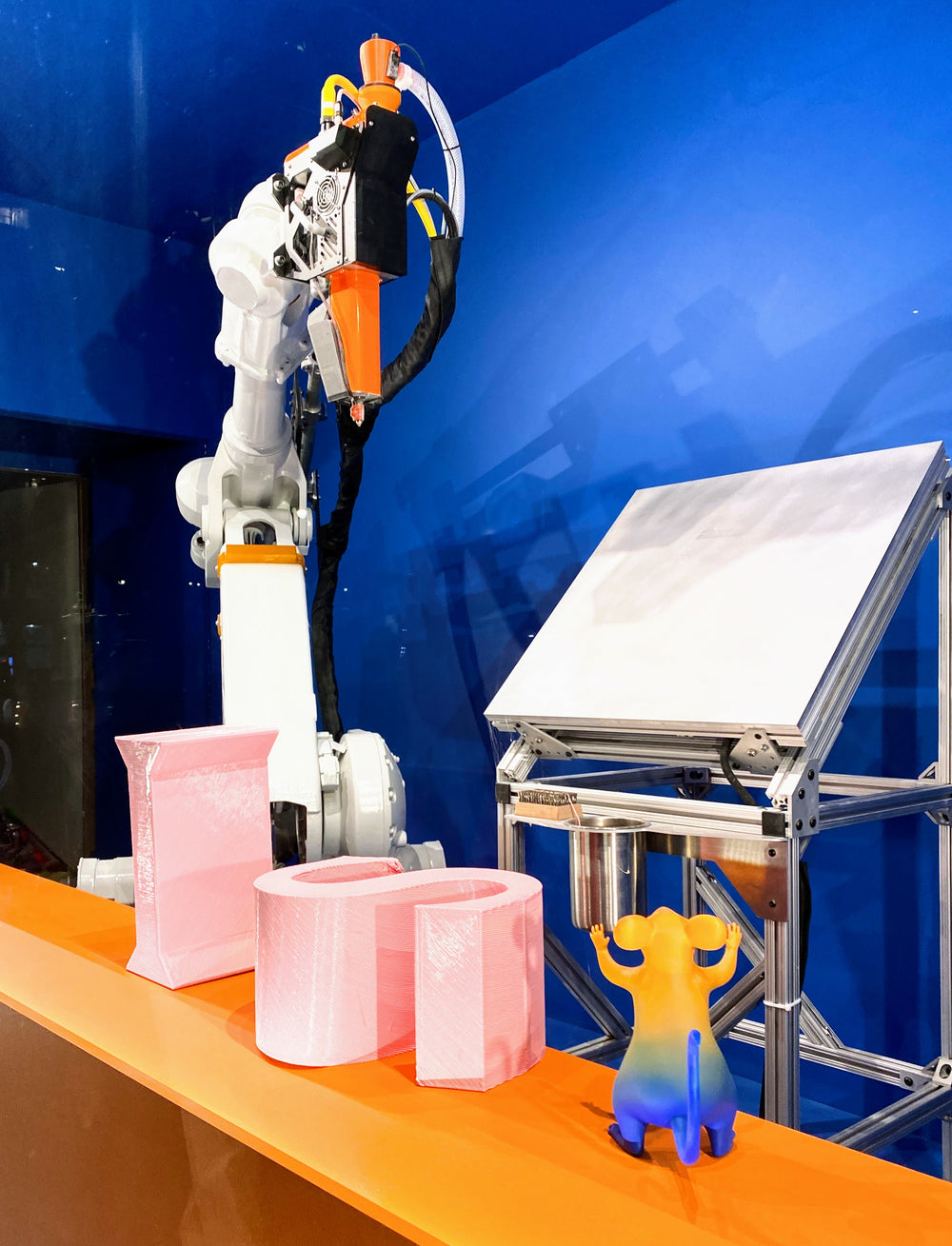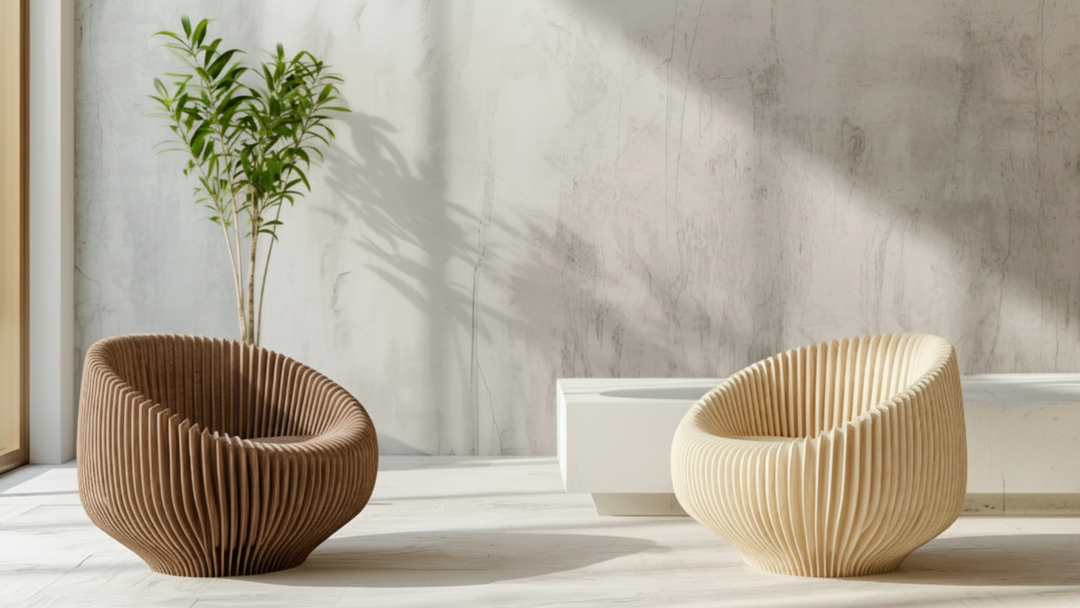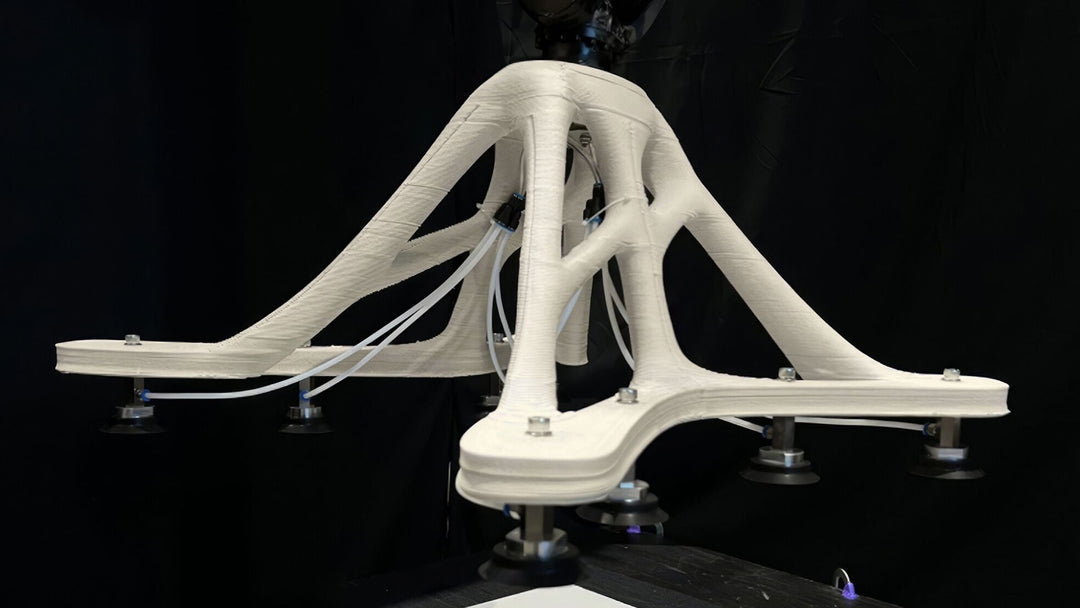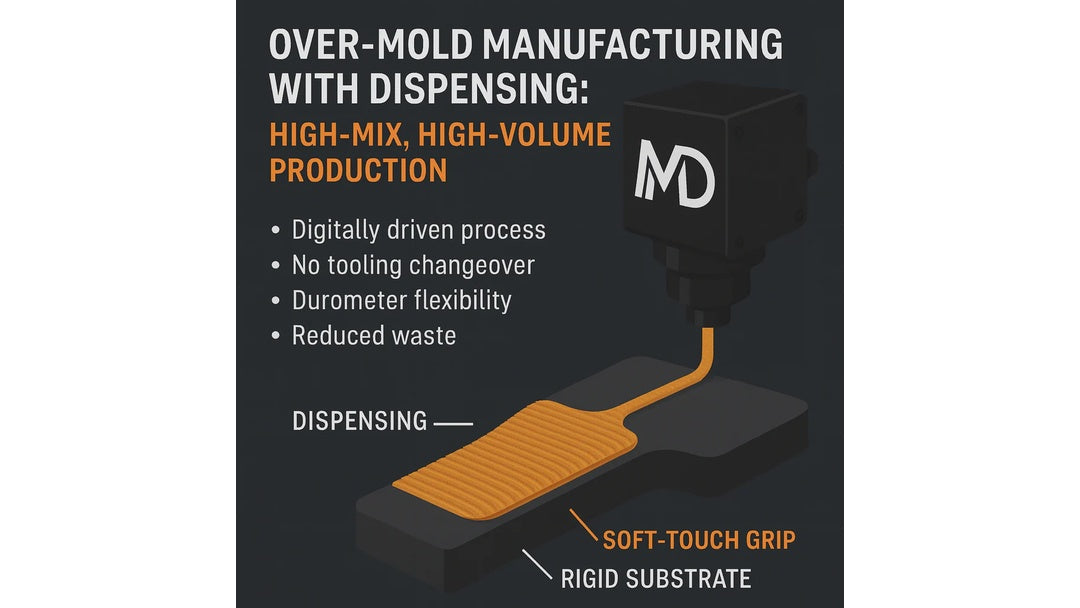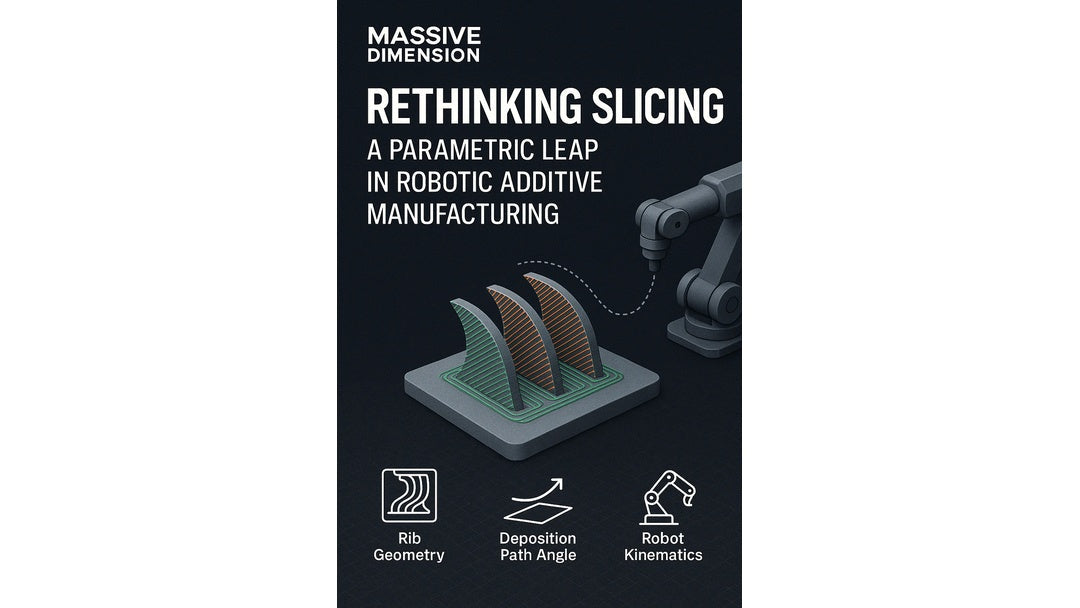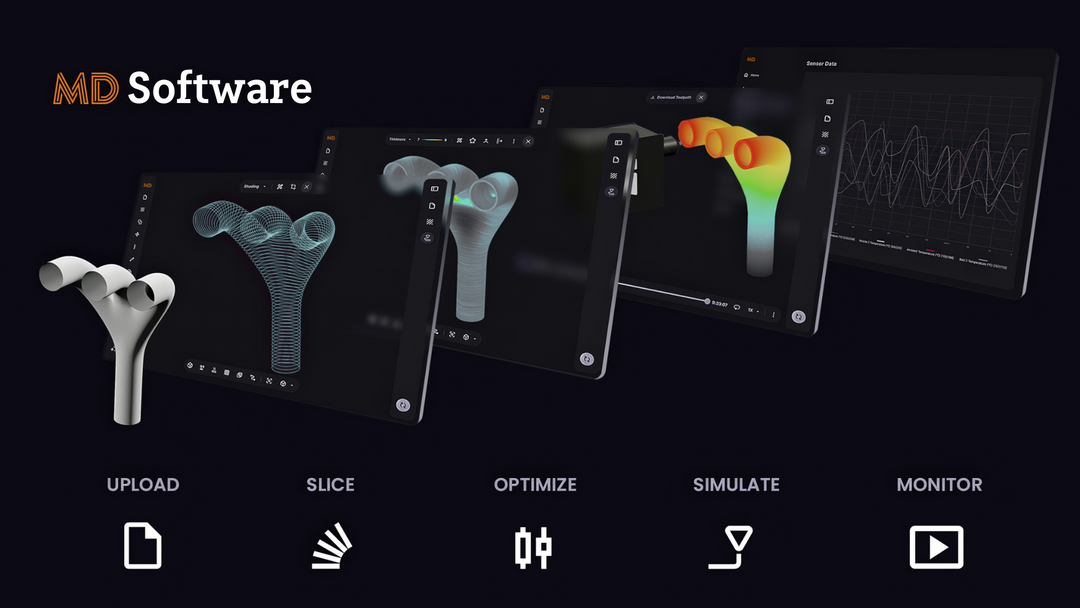University of Utah Update: Magnetic Filings & PETG Experiments
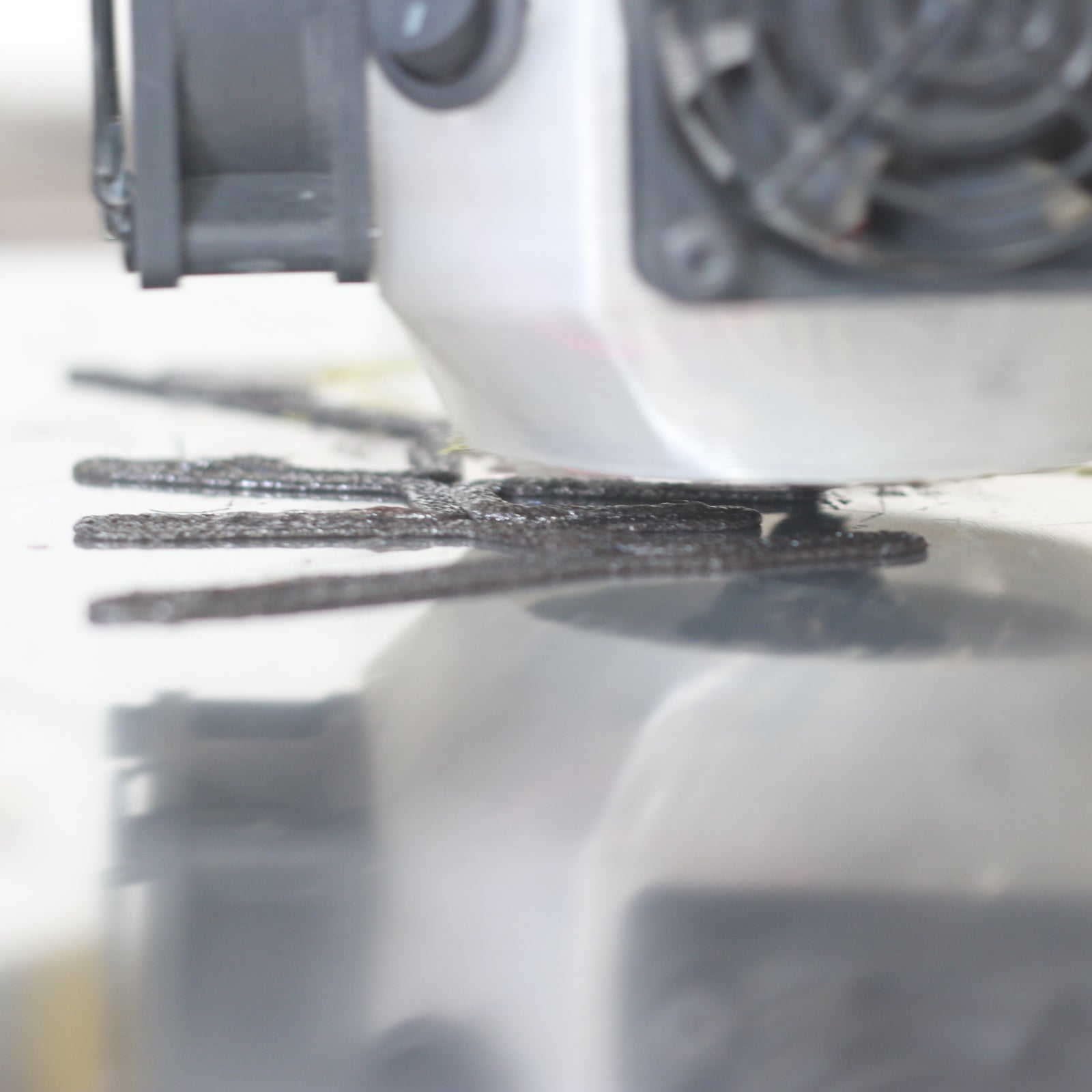
IMPORTANT NOTE:
Going forward the posts related to our collaboration with binary and the University of Utah will be posted only on the Filabot website as Filabot products will be featured/used. Next week, the students transition to a second class project that combines filament extrusion on the Filabot EX2 with subtractive fabrication methods.
To follow the story please go to the Filabot website and join the email list and/or follow our social media accounts.
-------------------
Our fourth and final spotlight for the the Design of University of Utah Digital Assemblies class showcases their aleatory-inspired final product, as well as the magnetic experimental materials and large-format prints created using the Filabot EX2 and the Massive Dimension Pellet Head Extruder.
Using dual design prompts of “Aleatory Methods” and “Tactile Communication”, this group designed their experimental material using magnetic filings as their additive to the post-industrial recycled PETG. “We felt that the magnetic portion of the magnetic material helped illustrate the idea of tactile communication. Allowing the user to use a product that is versatile in [both] how it's held and its placement [in space].
A brief example could be placing the lamp on the wall and then allowing the user to place it next to them while working, or on a base on their nightstand.”
Starting with images as inputs (image 2), then progressing through various digital models (image 3), the group’s design brings the random elements of natural destruction into an additively fabricated form. After progressing through material experimentation and printing of scale models on desktop machines, the final parts were printed on binary’s large Fanuc arm using the Massive Dimension Pellet Extruder.
“We [were inspired by] patterns and forms created randomly, either by a random molding of line and volume, or a repeated unit joined randomly. Serendipity.”
Group members: Sophie, Chi and Zachary
Experimental material: Iron filings in recycled PETG.
Print stats: 2-1/2” tall x 10-/12” length x 10-½” width // 555 grams // 92 minutes
Click here to see all Filabot posts related to the University of Utah/ Binary collaboration.
Click here to see all Massive Dimension posts related to the University of Utah/ Binary collaboration.
Below are some photos from the experiments:
1. Magnetic Pellets Suspended Against Masor Jar Lid

2. Aleatory Inspiration - Cracks In A Wall

3. 3D Model of the Extrusion of Traced and Rationalized Wall Cracks

4. The First Layer

5. Final Print

6. Close-Up On Layers

